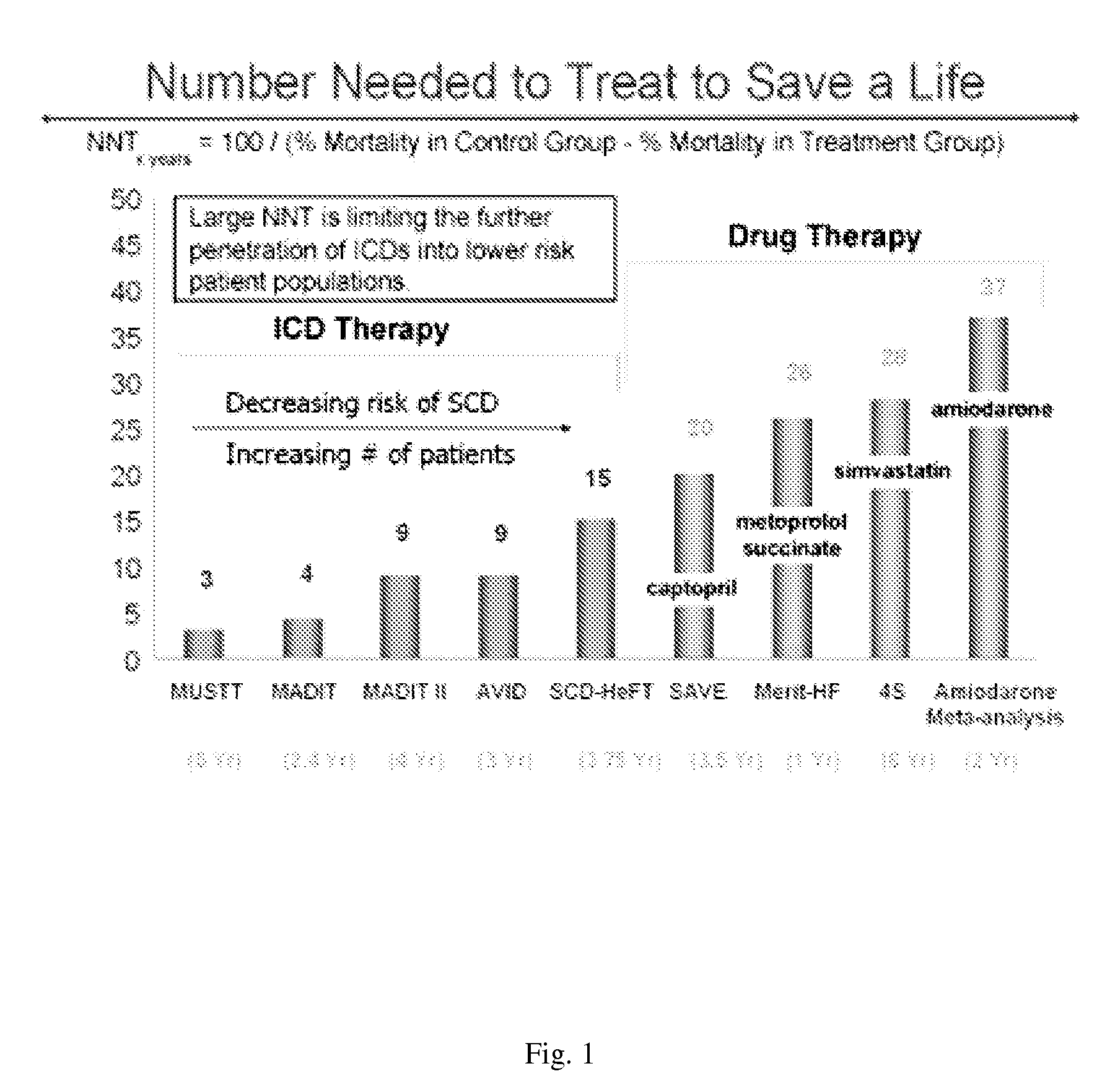Sca risk stratification by predicting patient response to Anti-arrhythmics
a risk stratification and patient technology, applied in the direction of microbiological testing/measurement, biochemistry apparatus and processes, etc., can solve the problem of low use of these devices
- Summary
- Abstract
- Description
- Claims
- Application Information
AI Technical Summary
Benefits of technology
Problems solved by technology
Method used
Image
Examples
examples
Bead-based Genotyping and Haplotyping
[0082]A template can be generated by obtaining genomic DNA probes representing the SNPs of SEQ ID NO.'s 11-13, 19, 22-28, 30-32, 34-35, 37-55, 57, 61, 75-79, 83-88 and 102-103. Nested PCR can be used to generate a template for typing where amplifications could be performed using PCR Mastermix (Abgene, Inc., Rochester, N.Y.). Primary PCRs can be carried out with 20 ng genomic DNA in 10 μl 1×PCR Mastermix, 0.2 μM of primers, and 2 mM MgCl2 with the following cycling conditions: 95° C. for 5 min; 40 cycles at 95° C. for 30 s, 58° C. for 30 s, 72° C. for 2 min 30 s; 72° C. for 10 min. The product can then be diluted 1:500 in 1×TE and re-amplified using asymmetric PCR. The amplified products can then be analyzed by gel electrophoresis and then used directly in a bead-based genotyping and haplotyping reaction.
Allele-specific Hybridization
[0083]For genotyping and haplotyping, allele-specific oligonucleotides (ASOs), representing the SNPs of SEQ ID NO.'s...
PUM
| Property | Measurement | Unit |
|---|---|---|
| Fraction | aaaaa | aaaaa |
| Fraction | aaaaa | aaaaa |
| Fraction | aaaaa | aaaaa |
Abstract
Description
Claims
Application Information
 Login to View More
Login to View More - R&D
- Intellectual Property
- Life Sciences
- Materials
- Tech Scout
- Unparalleled Data Quality
- Higher Quality Content
- 60% Fewer Hallucinations
Browse by: Latest US Patents, China's latest patents, Technical Efficacy Thesaurus, Application Domain, Technology Topic, Popular Technical Reports.
© 2025 PatSnap. All rights reserved.Legal|Privacy policy|Modern Slavery Act Transparency Statement|Sitemap|About US| Contact US: help@patsnap.com



